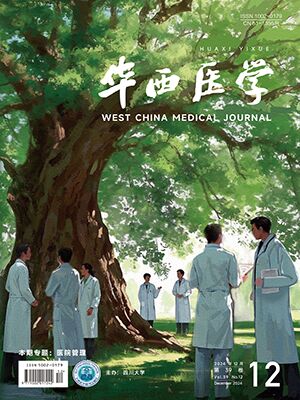【摘要】 目的 探讨重型颅脑损伤的临床特点和救治经验。 方法 回顾性总结2002年1月-2008年12月所诊治重型颅脑损伤96例的临床资料。 结果 96例重型颅脑损伤患者,其中手术治疗59例,非手术治疗37例。按GOS评分,出院时恢复良好33例(34.4%),中残15例(15.6%),重残16例(16.7%),植物生存8例(8.3%),死亡24例(25.0%)。 结论 重型颅脑损伤仍然具有较高的病死率和致残率,早期及时手术清除颅内血肿解除脑疝,早期气管插管或气管切开并呼吸机支持治疗及其它积极恰当的综合治疗措施是抢救治疗成功的关键;后期加强护理注重防治并发症,可以最大可能挽救患者生命。
【Abstract】 Objective To explore the clinical characteristics of severe cranio-cerebral injury and its treatment experience. Methods The clinical data of 96 patients with severe cranio-cerebral injury from January 2002 to December 2008 were retrospectively analyzed. Results In 96 patients with cranio-cerebral, 59 had undergone the surgeries and the others had undergone the conservative treatment. According to the Glasgow outcome scale (GOS), 33 (34.4%) had a good outcome, 15 (15.6%) had moderate disability, 16 (16.7%) had severe disability, 8 (8.3%) had vegetative persistent and 24 (25.0%) died. Conclusion The mortality and morbidity rate of the patients with severe cranio-cerebral injury are high, we should clean out the intracranial hematoma and relieve cerebral herniation in time, performed early tracheal intubation or tracheotomy with respirator therapy, and other active and appropriate general therapies, and avoid complications via rehabilitation time intensify nursing to rescue the patients.
Citation: TANG Binghong,QIN Zongming,YANG Mingbing. Diagnosis and Treatment of Severe Cranio-cerebral Injury. West China Medical Journal, 2011, 26(1): 57-59. doi: Copy
Copyright © the editorial department of West China Medical Journal of West China Medical Publisher. All rights reserved




